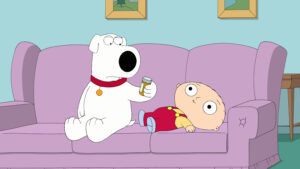I’ll tell you up front: I am an avoidant partner. I frequently withdraw into myself and become uncommunicative. In fights I get quiet rather than angry, saying less and less, making a partner feel like they have no ability to elicit a reaction from me. My stock response to criticism is not to deny it but to say I don’t care; my chief insult, across my 20+ years of romantic relationships, has been to say that I just wasn’t that into the person I was with.
These are all classic signs of an avoidant attachment style. According to the Attachment Project, avoidant individuals “do not want to depend on others, have others depend on them, or seek support and approval in social bonds”, which is a pretty good description of my longstanding fear of relying on others. The question is whether the broad understanding offered by attachment theory can really help me be a better partner, or enable my partner to better help me.
The concept of attachment styles has been rattling around in psychology for at least 70 years, but it has recently become inescapable. Pioneered by the British psychologist John Bowlby in the Fifties, attachment theory suggests that experiences in our childhoods, most significantly the way we were parented, play a large role in our later adult relationships. If our parents made us feel safe, if their attachment to us was stable, we carry that into adulthood and have healthy relationships in turn. But if we were parented in a way that was cold or uncaring or inconsistent, then we will bring echoes of that treatment into our friendships and romantic partnerships, to our detriment.
Attachment theory has gone in and out of fashion over time, but when it’s been hot, it’s been worked into self-help books, discussed to death by unhappy girlfriends, and used to analyse everything from societal trends to episodes of reality TV shows. The 2010 book Attached: The New Science of Adult Attachment and How It Can Help You Find — and Keep — Love has become something of a bible for adherents to this philosophy, and has kept selling, to the point that the New York Times wrote it up in a trend piece more than a decade after its publication. NPR, which is a good guide to the id of the overeducated American liberal, ran an explainer of attachment theory last year. And right now, topics related to it have hundreds of millions of views on TikTok.
The theory goes that there are four major styles, though there are variations depending on who you’re listening to. A healthy childhood, with loving and committed parenting, usually leads to the secure attachment style: these people tend to be dependable and self-confident, good partners who don’t let their relationships be influenced by fear of abandonment. The avoidant style presents itself as a commitment to extreme independence, which can threaten the mutual bonding of a healthy relationship, and which typically springs from the fear of relying on others and the vulnerability that brings. The anxious style is found in those with an unhealthy degree of need for their partner, and a constant fear that the person they’re attached to will leave them. The disorganised style combines aspects of both the anxious and avoidant styles, alternating between aloofness and deep neediness.
The internet is a sea of dubious claims that your partner might be a sociopath, or that your relationships fail because of conflicting astrological signs; in this context, a simple explanation about the connection between loving and secure parenting and loving and secure romantic partnership seems sensible. The existence of the secure style does seem a little like a projection of a “normal” ideal that few people actually reach, and as always with this type of thing, there’s a question of how far you can deviate in any direction before you occupy another of the styles. But I’d certainly like to believe that there’s plenty of people out there who enjoyed healthy childhoods and are able to navigate adult relationships with confidence because of that. The assumption of universal childhood trauma that has grown over the years is good for no one.
Still, there’s little doubt that people who have suffered neglect in childhood often struggle, later in life, to feel safe in relationships — because they are either unable or unwilling to allow for true intimacy, or constantly afraid of losing it. But the disorganised attachment style — otherwise known as “fearful-avoidant”, “anxious-avoidant” or “mixed” — strikes me as just the kind of catch-all category that you often see with this sort of schema, into which people squeeze stubbornly complicated cases.
That doesn’t mean it’s a useless concept. What I’m suggesting here is that categories like these are helpful when our experiences conform to their guidelines, potentially unhelpful when they don’t, and dangerous when we begin to see them as science instead of interpretation. If we think of them as useful-but-artificial frames for understanding ourselves, they can be handy and healthy. If we insist on seeing them as a matter of scientific fact, we risk falling into all sorts of bad mental habits. For example, let’s consider me.
As I said, I’m typically avoidant. When I’ve wanted to end a relationship, I’ve simply pulled further and further away, making it clear to the other person that I was no longer invested, without sitting them down for a frank talk. When someone else has ended a relationship with me, I’ve responded by parting as quickly as possible, shutting down the opportunity for a sympathetic conversation, even when I was secretly very upset. In general, my inability to escape the fantasies playing out in my head was convenient to me: they became another world, in which what I was trying to avoid was not present.
This dynamic would only support attachment theory if it stemmed from childhood and my relationship with my parents. Here again my case study seems to support it. Both of my parents died when I was young, and I spent the remainder of my childhood without an adult to securely hold on to. I had a legal guardian, but she and I had an explosively unhappy relationship, and I left home as soon as I was able. I spent so much time in a state of emotional self-defence that I never really confronted what happened to me, and it’s taken decades of turmoil to put it together, with the help of therapy. My embarrassingly predictable response to a childhood where attachment led only to pain has been an adulthood in which I have craved intimacy but have consistently refused to allow myself to feel it. This is about as obvious an expression of the core of attachment theory as you’re likely to find.
And yet I’m also a good object lesson in the limitations of this approach. According to the Attachment Project, “parents who are strict and emotionally distant, do not tolerate the expression of feelings, and expect their child to be independent and tough might raise children with an avoidant attachment style”. But my parents were remarkably libertine, relentlessly loving, and gave us the opportunity to express our feelings. It’s true that we were raised to be independent and make our own choices. But this wasn’t a result of neglect; it was, in fact, a purposeful approach to parenting, and thus a reflection of love. Their belief was that allowing us to make our own choices and accept the bumps and bruises that came along with them was ultimately the only way to prepare us for real life.
There are also ways in which my behaviour, as well as my background, doesn’t fit into attachment theory. Avoidant people supposedly dodge arguments, which is not exactly a trait I’m known for. And they are generally less likely to fall in love, but as a younger man I would fall head over heels in no time at all. Within a given intimate relationship, romantic or not, I’m likely to withdraw, as a defence mechanism — but my heart still desires intense connection. My brain is just unwilling to countenance the risks.
Some would say, well, that means your attachment style is disorganised. But this is precisely my problem with catch-all categories like that one: anytime there’s an apparent internal contradiction, you just throw people into them. The result is a system that’s non-falsifiable, and thus not useful.
If you dig around into forums devoted to attachment styles, such as the relevant subreddit, or look through the endless Instagram posts dedicated to them, you’ll find that this kind of confusion is very common — people will say something like, “my attachment style describes me so perfectly in this regard, but in this other aspect of myself, it doesn’t describe me at all”. And it seems that the more closely a given attachment style seems to reflect one part of your life, the more it stings when it fails to reflect another. An apparently scientific model that seems to fit us perfectly can feel like validation, like our problems and struggles are not incomprehensible to others. When we then fail to conform to other aspects of that model, it makes our original feeling of alienation — the one that had us Googling “what’s my attachment style” in the first place — all the more acute.
And yet, any broad categorisation of messy human people will, in practice, blur at the edges. People who subscribe to Myers Briggs or the Big Five Personality Test, or the most popular categorisation scheme of all, astrology always find this — it explains everything, until it explains nothing. Horoscopes are written to be vague and broad enough to be non-falsifiable. But as the industry of astrology has grown, so too has its claims to truth — which will inevitably and eventually fail, given that the stars can’t actually predict our destinies. People who are invested in attachment styles hate the comparison to astrology. But if you look at how these systems are discussed and experienced, you can’t help but note the similarities.
So, if they’re doomed to fall apart, why do we keep putting ourselves in categories? We all recognise that taking a Buzzfeed quiz about which Disney princess we are is a frivolous exercise. And yet the enduring popularity of that sort of thing — I remember the copies of Seventeen magazine that my sister collected and the endless personality quizzes therein — speaks to one of the most powerful urges in human life, which has only grown stronger in the digital age. We long to be understandable to others, to represent a type, so that we can be seen — especially in the cacophony of personalities that is the internet.
Of course, anyone who has ever known a teenager knows that this desire to fall into an easily-communicable category often goes hand-in-hand with extreme discomfort with being categorised. But in a culture that has effectively discarded religiosity — which has ironised defining ourselves by our professions and abandoned the communal markers that once created a sense of meaning — we find ourselves desperate to be something. Some people fill this need by overidentifying with their consumer choices — the person who has tried to make owning Beanie Babies a personality, the ones who thinks environmentally-friendly consumption makes an identity. Some people become “stans”, giving their autonomy to a celebrity to feel a sense of belonging. Some people join cults. And some people overinvest in systems like attachment theory.
As an atheist, and one who feels that spiritual woo-woo is ultimately corrosive to many lives, I’m not a fan of people reading their horoscopes or Googling whether a potential match has a compatible star sign. But I also understand that most people use astrology for fun and perhaps to give them another lens through which to consider their own behaviour. Despite their scientific patina, attachment styles ought to be used in a similar way. They are useful rather than true.
If they are understood to be a metaphor for deeper patterns and pathologies in relationships, they can promote healthy romantic and sexual lives. If they are mistaken for some sort of transcendent categories into which we all fit, and which are existential or comprehensive descriptors, they are more likely to promote misery than healthy relationships.
It’s particularly easy for this sort of system to create self-fulfilling prophecies; someone who encounters attachment styles in popular culture, rather than therapy, might decide that they are simply cursed to be a certain way and act out avoidance or anxiety in response. A therapist who uses attachment theory to counsel couples in how to have better relationships will be well aware of this distinction between what is useful and what is transcendently real. But the internet is a machine for making people place undue faith in limited human concepts. “There are exactly four ways that adults attach to each other” fits comfortably in an Instagram meme, just like “Geminis are capricious and can’t be counted on”. “These concepts are useful descriptors of broad human behaviours, but they are necessarily limited and contextual and should not be relied on for literal or perfect advice” does not. And the latter doesn’t sell self-help books, which become popular by offering exactly the kind of certitude and totalising advice that we shouldn’t invest in them.
Part of the misery of the contemporary conversation about mental health is that the people who are best equipped to navigate its incredible and increasing complexities are precisely those that need it the least. An emotionally healthy person is more likely to accept the limitations of attachment theory, where an emotionally vulnerable person might get overinvested in it. An avoidant person is more likely to use broad concepts they find on the internet to make sense of their lives, because they lack the deep human relationships that would help them understand themselves. An anxious person is more likely to cast about for any reassuring explanation for precisely what they need to change in order to maintain their grasp on someone they love. A fearful-avoidant person might experience both at the same time. Each, in other words, is highly impressionable, and more likely to put too much faith in attachment theory.
The devolution of psychology to a crowdsourced “science”, popularised through memes, has done tremendous damage to our ability to let experts guide our complicated paths toward understanding our own minds. The solution here is for us to return mental healthcare to the status of medicine, not internet fads. There’s nothing wrong with reading about attachment styles — or boundaries, or gaslighting, or narcissism; nothing even wrong with learning about them through Instagram. The trouble is when we start to think of these frameworks for understanding relationships as “real”, as certainties rather than human tools, when in fact, like so much else in the science of human behaviour, they cannot exist outside of our collective effort to define them. We created them, and we would do well to remember it — but of course, that’s hardest for the people who need help the most.
Disclaimer
Some of the posts we share are controversial and we do not necessarily agree with them in the whole extend. Sometimes we agree with the content or part of it but we do not agree with the narration or language. Nevertheless we find them somehow interesting, valuable and/or informative or we share them, because we strongly believe in freedom of speech, free press and journalism. We strongly encourage you to have a critical approach to all the content, do your own research and analysis to build your own opinion.
We would be glad to have your feedback.
Source: UnHerd Read the original article here: https://unherd.com/




